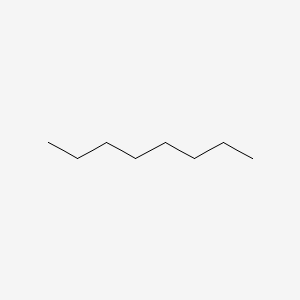
|
Octane |
Octane is a lipid of Fatty Acyls (FA) class. The involved functions are known as enzyme activity and Synthesis. Octane often locates in Mitochondrial matrix. |
2354 |
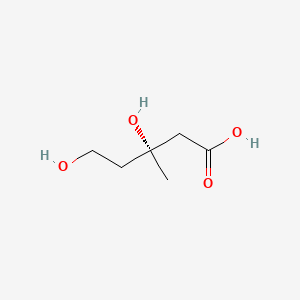
|
Mevalonic acid |
Mevalonic acid is a lipid of Fatty Acyls (FA) class. |
1437 |

|
(e,e,e,e)-squalene |
(e,e,e,e)-squalene is a lipid of Fatty Acyls (FA) class. (e,e,e,e)-squalene is associated with abnormalities such as Hypercholesterolemia and Cataract. The involved functions are known as Process, metaplastic cell transformation, Protein Overexpression, Anabolism and Biosynthetic Pathways. (e,e,e,e)-squalene often locates in Membrane, Protoplasm, Plasma membrane, Tissue membrane and Back. The associated genes with (e,e,e,e)-squalene are Genome, IMPACT gene, GAPDH gene, GTF2I gene and Chromatin. The related lipids are Membrane Lipids, cycloartenol, Sterols, Fatty Acids and Nonesterified Fatty Acids. |
1766 |
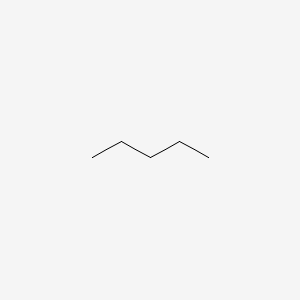
|
Pentane |
Pentane is a lipid of Fatty Acyls (FA) class. |
2265 |
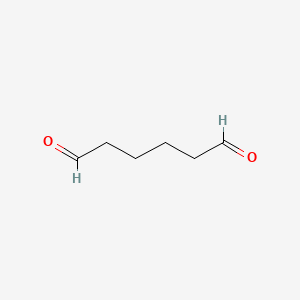
|
Adipaldehyde |
Adipaldehyde is a lipid of Fatty Acyls (FA) class. |
34 |
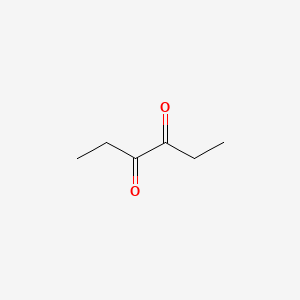
|
3,4-hexanedione |
3,4-hexanedione is a lipid of Fatty Acyls (FA) class. |
9 |
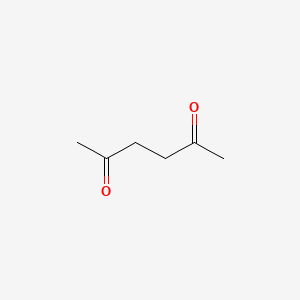
|
2,5-hexanedione |
2,5-hexanedione is a lipid of Fatty Acyls (FA) class. |
646 |
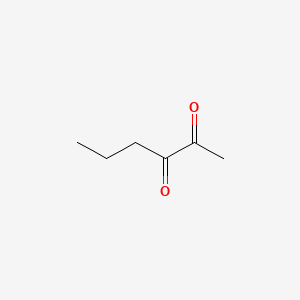
|
2,3-hexanedione |
2,3-hexanedione is a lipid of Fatty Acyls (FA) class. |
33 |
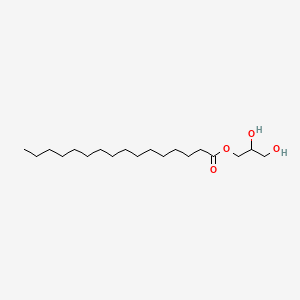
|
1-Palmitoyl-rac-glycerol |
1-Palmitoyl-rac-glycerol is a lipid of Glycerolipids (GL) class. 1-palmitoyl-rac-glycerol is associated with abnormalities such as Eczema, Food Allergy and Fatty Liver. The involved functions are known as inhibitors, lysophospholipase activity, Adjudication, cell transformation and Detergents. 1-palmitoyl-rac-glycerol often locates in Cytosol and soluble fraction. The associated genes with 1-Palmitoyl-rac-glycerol are FASTK Gene. The related lipids are 1,2-oleoylphosphatidylcholine, Lysophospholipids, phenyl valerate, Lysophosphatidylcholines and Palmitates. |
197 |

|
1-Palmitoyl-sn-glycerol |
1-Palmitoyl-sn-glycerol is a lipid of Glycerolipids (GL) class. |
30 |
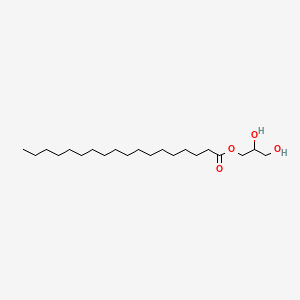
|
Glyceryl monostearate |
Glyceryl monostearate is a lipid of Glycerolipids (GL) class. |
353 |
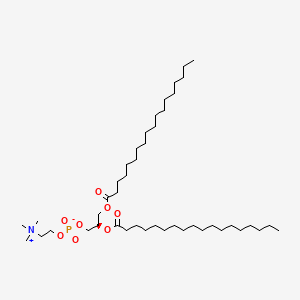
|
816-94-4 |
816-94-4 is a lipid of Glycerophospholipids (GP) class. 816-94-4 is associated with abnormalities such as Gigantism, Pulmonary Hypertension, Neutropenia, Serum Sickness and Urticaria. The involved functions are known as pulmonary effects, Hemodynamics, Stereochemistry, Host defense and Blood Circulation. 816-94-4 often locates in vesicle, Blood, biological membrane, soluble and Cardiopulmonary. The associated genes with 816-94-4 are pentaglobulin, EMILIN1 gene and FASTK Gene. The related lipids are Liposomes, dimyristoylphosphatidylglycerol, Lipopolysaccharides, Unilamellar Liposomes and Unilamellar Vesicles. |
828 |

|
Platelet activating factor |
Platelet activating factor is a lipid of Glycerophospholipids (GP) class. Platelet activating factor is associated with abnormalities such as Atherosclerosis, Acute cholecystitis without calculus, Cholecystitis, Colitis and Cholecystitis, Acute. The involved functions are known as Cell Survival, Metabolic Inhibition, lipid oxidation, Apoptosis and Oxidation. Platelet activating factor often locates in soluble, Cellular Membrane, Smooth muscle (tissue), Intima and Tissue specimen. The associated genes with Platelet activating factor are apolipoprotein A-I Milano, Homologous Gene, TSPO gene, HBEGF gene and SLC33A1 gene. The related lipids are Hydroxycholesterols, Liposomes, 25-hydroxycholesterol, Lysophosphatidylcholines and Lipopolysaccharides. The related experimental models are Knock-out, Mouse Model and Transgenic Model. |
7383 |
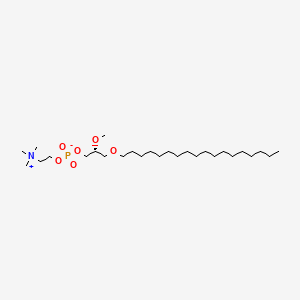
|
ET-18-OCH3 |
ET-18-OCH3 is a lipid of Glycerophospholipids (GP) class. Et-18-och3 is associated with abnormalities such as Morphologically altered structure, Choline Deficiency, Acquired partial lipodystrophy and Punctate inner choroidopathy. The involved functions are known as Mutation, establishment and maintenance of localization, Uptake, Increased Sensitivy and Process. Et-18-och3 often locates in Plasma membrane, Membrane, Back, Protoplasm and Endoplasmic Reticulum. The associated genes with ET-18-OCH3 are Genome, Alleles, ATP8A1 gene, Homologous Gene and ATPase Gene. The related lipids are Phosphatidylserines, Sphingolipids, Lysophosphatidylcholines, Phospholipid Ethers and Phosphatidate. The related experimental models are Knock-out. |
794 |
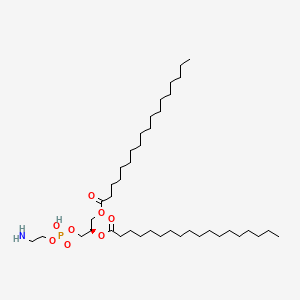
|
1,2-Distearoyl-sn-glycero-3-phosphoethanolamine |
1,2-Distearoyl-sn-glycero-3-phosphoethanolamine is a lipid of Glycerophospholipids (GP) class. 1,2-distearoyl-sn-glycero-3-phosphoethanolamine is associated with abnormalities such as Painful Bladder Syndrome, Dehydration, Renal tubular disorder, Gigantism and Tumor-Associated Vasculature. The involved functions are known as conjugation, Ligand Binding, Process, Laser-generated electromagnetic radiation and Blood Circulation. 1,2-distearoyl-sn-glycero-3-phosphoethanolamine often locates in Tissue membrane, Early endosome, Body tissue, Cell surface and Membrane. The associated genes with 1,2-Distearoyl-sn-glycero-3-phosphoethanolamine are R peptide, P4HTM gene, NHS gene, TSPO gene and SLC33A1 gene. The related lipids are Liposomes, 1,2-distearoylphosphatidylethanolamine, Micelles, Fatty Acids and sialogangliosides. |
438 |

|
1-Oleoyl Lysophosphatidic Acid |
1-Oleoyl Lysophosphatidic Acid is a lipid of Glycerophospholipids (GP) class. 1-oleoyl lysophosphatidic acid is associated with abnormalities such as Myocardial Infarction, early pregnancy, Scleroderma, Blind Vision and Hyperlipidemia. The involved functions are known as Agent, Blood coagulation, Selection, Genetic, Analyte and Biological Processes. 1-oleoyl lysophosphatidic acid often locates in Tissue specimen, Body tissue, Blood, Membrane and Skin. The associated genes with 1-Oleoyl Lysophosphatidic Acid are Mucin-16, Peptides, SMAD4 gene, RND1 gene and Polypeptides. The related lipids are lysophosphatidic acid, A(2)C, Lysophospholipids, Fatty Acids and sphingosine 1-phosphate. The related experimental models are Mouse Model, Knock-out, Cancer Model, Xenograft Model and Arthritis, Adjuvant-Induced. |
3463 |

|
lysophosphatidic acid |
lysophosphatidic acid is a lipid of Glycerophospholipids (GP) class. Lysophosphatidic acid is associated with abnormalities such as Atherosclerosis, Alzheimer's Disease, Asthma, Diabetes Mellitus, Non-Insulin-Dependent and Septicemia. The involved functions are known as Inflammation, Chemotaxis, Binding (Molecular Function), Polymerization and Inflammatory Response. Lysophosphatidic acid often locates in Cytoskeleton, Microfilaments, actin cytoskeleton, Extracellular and Structure of germinal center of lymph node. The associated genes with lysophosphatidic acid are TNF gene, MAPK3 gene, RHOA gene, CDC42 gene and ADRBK1 gene. The related lipids are lysophosphatidic acid, Lipopolysaccharides, Lysophosphatidylcholines, Lysophospholipids and Phosphatidic Acid. The related experimental models are Knock-out, Transgenic Model, Rodent Model and Disease model. |
820 |

|
trichostatin A |
Trichostatin is a lipid of Polyketides (PK) class. Trichostatin is associated with abnormalities such as Dentatorubral-Pallidoluysian Atrophy, PARAGANGLIOMAS 3, abnormal fragmented structure, Disintegration (morphologic abnormality) and Hyperostosis, Diffuse Idiopathic Skeletal. The involved functions are known as Acetylation, Cell Differentiation process, histone modification, Gene Silencing and Transcriptional Activation. Trichostatin often locates in CD41a, Hematopoietic System, Chromatin Structure, Blood and Endothelium. The associated genes with Trichostatin are SPI1 gene, CELL Gene, Chromatin, CXCR4 gene and DNMT1 gene. The related lipids are Butyrates, Promega, butyrate, Lipopolysaccharides and Steroids. The related experimental models are Knock-out, Mouse Model, Xenograft Model and Cancer Model. |
5401 |
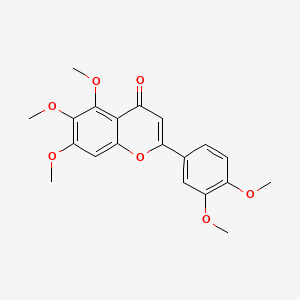
|
Sinensetin |
Sinensetin is a lipid of Polyketides (PK) class. |
76 |
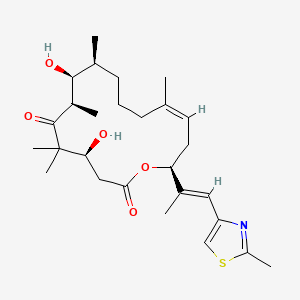
|
Epothilone D |
Epothilone d is a lipid of Polyketides (PK) class. Epothilone d is associated with abnormalities such as Tauopathies, Neutropenia, Neuropathy and Hematological Disease. The involved functions are known as Mutation, Apoptosis, Mitotic arrest, Cell Growth and Anabolism. Epothilone d often locates in Cytoskeleton, Axon, Cell Wall, Chromosomes and Spindle. The associated genes with epothilone D are SLC33A1 gene, Chromatin, GTF2I gene and HEXA gene. |
174 |



















